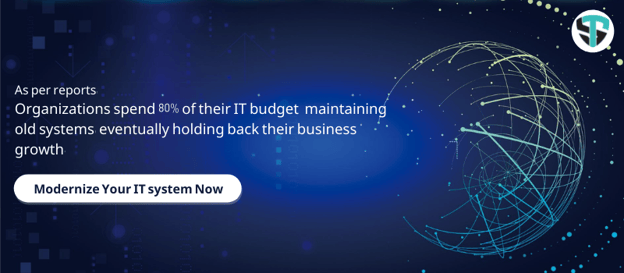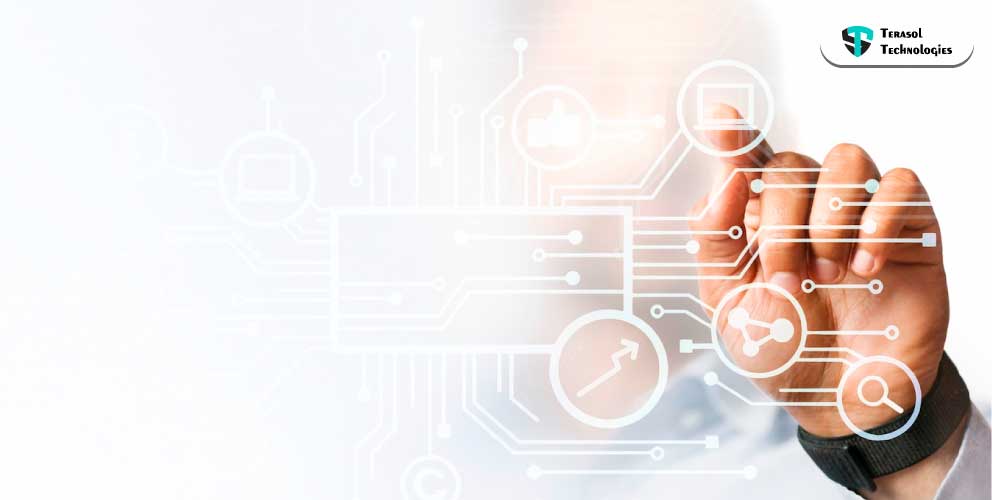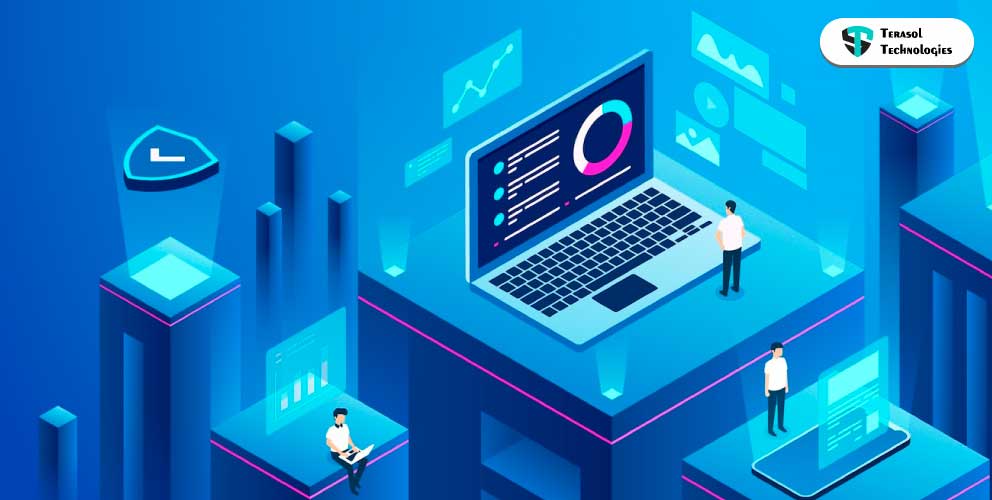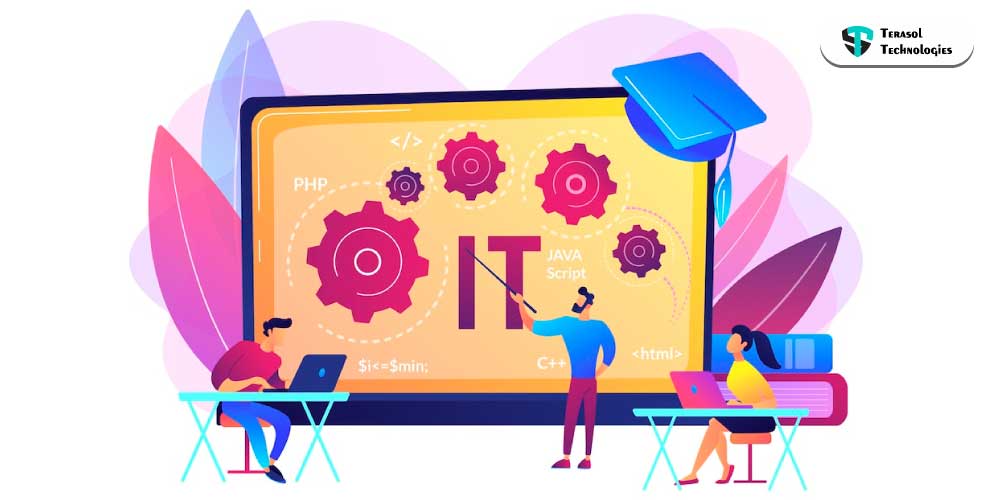Legacy System Modernization Approaches To Overcome its top 9 Barriers
Organizations have their own set of needs, people, issues, and objectives. Are there really "one-size-fits-all" legacy system modernization approaches?
To be on point, should there be "one-size-fits-all" legacy system modernization approaches?
No, we don’t believe this will be optimal.
Modernizing an organization isn't always simple. It can be a lot easier with the correct vision, strategy, cloud platform, and support.
For business improvement, fast-evolving engineering is embracing cloud-based alternatives that include DevOps, APIs, serverless architecture, and microservices. Company-wide sensory networks, blockchain, and smart computing are being incrementally integrated to modernize antiquated IT systems and validate their software-market fit.
There is a huge impact of Covid disruption on organizations’ digital modernization transformation.
However, bringing modernization to fruition isn't always simple. It's a journey full of crucial decisions to make, each one having the potential to shape your company's destiny.
Why is there a need for legacy system modernization?
There is no company that doesn’t enjoy a competitive edge or lower cost or productive working staff.
Due to latencies and bottlenecks in older software, the entire organization suffers.
For instance, think what repercussion your organization might have faced because you were stuck with those 20’s way of writing via a typewriter.
While software, as an industry, changes very rapidly. Whether it's an ERP system or a consumer-facing app, keeping up with the latest technology is critical to success. Here are some reasons:
.png?width=560&name=IT%20modernization%20Strategy%20(1).png)
Although to succeed in the modernization process, it takes business more than just bigger budgets and new infrastructure.
There are several common challenges that companies must overcome along the route, just as there are on any multi-faceted journey.
Here are the most significant barriers of software modernization — and some advice on how to overcome them to conduct a productive modernization project at your company.
Legacy System Modernization Approaches To Overcome its top 9 Barriers
Every day, businesses are exposed to the many effects of outdated infrastructure and applications. These issues include the difficulty to offer new features at the speed needed by business management, difficulties in locating and maintaining developers with legacy skillsets, keeping maintenance costs under control, minimizing work-request backlogs, and many more.
Let’s see the barriers and legacy system modernization approaches to overcome them so for the benefit of your business.
1. Momentum Barrier
Legacy system modernization initiatives are large, and if you get started too quickly without a clear plan for delivering incremental value, you'll quickly run out of steam. Your entire modernization journey could come to a standstill if you don't address underlying issues first.
Or sometimes the temptation to bundle too much into one application is the biggest roadblock I've seen when it comes to launching a new software package.
Solutions:
Plan your modernization path ahead of time, explicitly laying out gradual phases as well as any major technical difficulties you'll face along the road, such as data format changes. While software modernization is specialized rather than generalized that it looks for sub-niches.
2. Focusing on what is feasible
Cloud migration is only one aspect of all the legacy system modernization approaches. Successful modernization projects begin with the desired business goal and move backward to the technological changes required to achieve that goal.
It may sound straightforward, but it forces you to consider what you could achieve with a modernized application infrastructure that isn't yet in place. It makes it a difficult assignment for teams that aren't used to working in updated cloud environments. Fatigue will set in rapidly if the rest of the organization doesn't have a clear vision of how it will give value to them and assist them to reach their strategic goals.
Solution:
The simplest method to get through this stumbling block is to start by taking a comprehensive look at your digital projects to see if there are any disconnects or issues that can be traced back to old technology. These are the areas where modernization can help the company's strategic ambitions.
3. Integration Issues
According to MuleSoft's Connectivity Benchmark 2022 report with Deloitte Digital, 99 percent of IT organizations will undertake digital transformation projects in the next five years, yet 88 percent of them claim integration issues are dragging them down.
Integrating your work with technologies that your audience may already be using can be difficult. According to MuleSoft, while the average IT organization has over 700 applications, only 28% of them are now integrated. Enterprise integration was being ignored for a long time which now needs to be changed.
Organizations appear to be investing more resources in the wrong places in their efforts to integrate apps and data from throughout the corporation.
Solution:
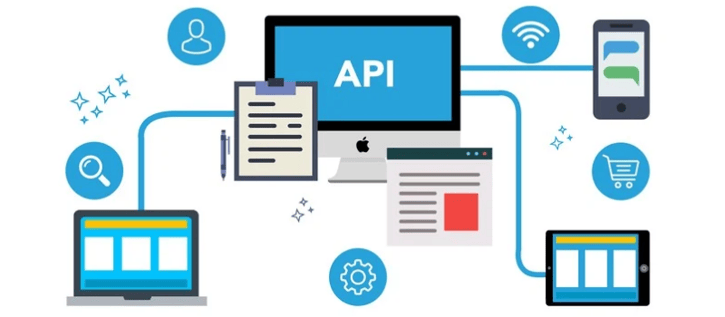 Digital transformation and efforts to improve the user experience revolve around applications. Holistic enterprise modernization is critical because it combines functionality and communication across systems, allowing businesses to respond rapidly to changing business needs and become more responsive and agile.
Digital transformation and efforts to improve the user experience revolve around applications. Holistic enterprise modernization is critical because it combines functionality and communication across systems, allowing businesses to respond rapidly to changing business needs and become more responsive and agile.
You'll need to figure out how to make your product compatible by leveraging application program interfaces (APIs) or collaborating with other tech companies. Through automation, faster processes, and reusable connections, API-led connectivity can drastically minimize these expenses.
Considering modernizing your IT infrastructure? Let us help you with best digital transformation of your system.
4. Communication Barrier
To fulfill consumer needs, software development necessitates the collaboration of a team. Around 33% of organizations face while transforming to software modernization. Every team member must be aware of the project's coding strategy, objectives, and objectives. Otherwise, the aftermath will harm the manager's reputation as well as the team's performance.
Solution:
A good team or project manager will ensure that each team member is aware of all aspects of a project and will quickly train new personnel. This will boost productivity and synergy. It will lead to an easy communication channel and help the organization with fewer mistakes while transforming to software modernization.
5. Risk of hindering the core business activities
Frequently, the systems that are most in need of modernization are critical to the business and, as a result, are likely to be in good working order. Because such software does not allow for downtime, IT faces the extra problem of trying to modernize without endangering current operations. Furthermore, every modification to fundamental skills carries a high level of business risk that is difficult to justify.
Solution:
When it comes to critical business applications, it just postpones the inevitable – and forces them to be reactive rather than proactive. They must, however, ensure that organization’s IT capital is spent on projects that provide the greatest value in the shortest amount of time and with the least amount of risk. To build a compelling case for modernization, a better grasp of the risk associated with inaction is required for the future growth of the company.
6. Modernization efforts require an excessive amount of time
According to MuleSoft's Connectivity Benchmark 2022 report with Deloitte Digital, around 24% of companies believe time constrain is a major challenge for software modernization in their organization.
Another major roadblock to modernization is the assumption that such projects take an excessive amount of time. They are, of course, complicated and necessitate a significant amount of planning and validation time in addition to the actual upgrading work. However, as with any project, the longer the schedule, the longer it takes to reap the benefits – and the more likely it is to be disrupted.
Solution:
IT businesses must figure out how to develop an overall modernization roadmap, deliver in smaller, incremental phases, adjust plans when business and IT requirements change, and track success.
'Quick wins' or smaller goals can help you illustrate the value of modernization right away and gain buy-in for the more difficult changes to come.
7. Lack of skills with modern software
For your developers, engineers, and organization, legacy system modernization implies a huge cultural and operational transformation. Teams won't be able to operate effectively with your newly modernized apps if the change isn't carefully planned, managed, and supported, eliminating a significant portion of the value the project may have delivered.
Managing these cultural and process adjustments necessitates a different set of abilities than those necessary for modernization's technological features.
Solution:
Some members with a good understanding of how modernization might assist the organization to accomplish its strategic goals will see their initiatives fail unless they involve the teams closest to each app in the transformation process.
8. Undervaluing the importance of quality assurance
The importance of quality assurance should never be overlooked when it comes to ensuring client happiness. Code quality must be evaluated and checked frequently throughout the development stages in order to provide high-performing and secure solutions.
Solution:
Outsourcing businesses can help with this by supplying qualified testers who can lead an integrated approach to ensure your project's quality.
9. Underestimating the future demand
Being unprepared for a highly successful launch is one of the unforeseen issues or impediments to deploying new software or services. Companies frequently misjudge the amount of traffic that a new product launch will generate for their infrastructure.
Solution:
Keep your technology updated, after all, technology is the present and future. build a system or software that scales swiftly when demand grows. Organizations need to avoid this stumbling block and ensure their site doesn't crash on launch.
Considering Adapting Software Modernisation?
Legacy system modernization is, in the truest sense of the phrase, an evolution. With holistic legacy system modernization approaches and support, you can accelerate your business revenue.
It's the result of a slew of simultaneous changes in architecture, applications, and corporate culture. Every facet of that evolution must be managed as part of a comprehensive modernization strategy to be successful. We collaborate closely with our clients and partners to provide tailored solutions that deliver corporate IT transformation and address our clients' specific business problems. Terasol Technologies, as an enterprise software development firm, can assist you in rethinking your basic IT infrastructure and software modernizing policy. Let us help you with the best software implementation and legacy system modernization approaches.
